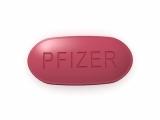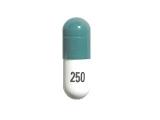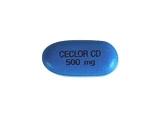Acute otitis media is an inflammation of the middle ear of a viral or bacterial origin. This disease is clinically manifested by pain in the ears and a violation of the general condition (fever, nausea, vomiting, diarrhea). Diagnosis is established according to otoscopic examination. The main therapy includes antibiotics and pain medications.
Antibiotics for ear infections of bacterial origin
Our staff has collected antibiotic positions from our online catalog. These OTC antibiotics can be used for ear infections like acute otitis media. Keep in mind, our online company is engaged in the sale of generic antibiotics. But it doesn’t mean they will provide some other effects on symptoms of ear infections.
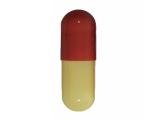
Cenmox
Cenmox is an antibacterial gent of penicilin class. It is prescribed for infections caused by bacterial pathogens.
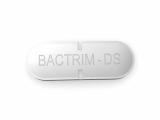
Bactrim
Bactrim belongs to an antibiotic group with Trimethoprim as the main ingredient.
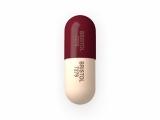
Trimox
It is prescribed for bacterial infections including acute otitits media.

Keftab
Keftab is an antibiotic used in the treatment of many bacterial infections.

Omnicef
Omnicef (Cefdinir) is applied as the treatment of different types of infections caused by bacteria.
All these antibiotics are included in the online catalog of our online service. Every user may buy them OTC but our staff recommends to consult a physician in any case. The physician will help define the right product together with the dosage. The main problem is that uncontrolled antibiotics intake may result in resistance bacteria gain. In a nutshell, if you start treatment, it is significant to continue it till the end of the course.
Follow our how to order instruction given on the front page and submit an order for antibiotics online. The ordering is secure. The drugs are quality and produced according all the standard requirements. We do not put your health on risk.
Finally, you won’t doubt our online servce is suspicious. We respect our customers right for safety and take all the efforts to offer them perfect online service. We like doctors are not intent to bring damage the customers’ health.
Symptoms of otitis media (ear infection)
In children:

- pain in the ear, especially when the child is lying;
- the baby does not sleep, cries, is excited, restless;
- there is no appetite for a preschooler or schoolchild;
- headache;
- hearing loss (no reaction to sounds);
- imbalance;
- high temperature;
- secretion from ears.
In adults:
- earache;
- hearing loss;
- secretion from the ear.
Causes
The inflammatory process at the middle ear is secondary stage. This means that, initially, the infection enters the tympanic cavity from other areas. Secretory otitis media occurs when a secretion formed as a result of a cold or allergic reaction and penetrates the middle ear through the Eustachian tube.
Depending on the location of the pathological process, three forms of otitis media are distinguished:
- interior;
- outer;
- otitis media.
The two main causes of otitis media are infection and the spread of inflammation from the nasopharynx to the middle ear, as well as ear injuries. Also, the disease can occur due to:
- trauma to the skin of the external auditory canal;
- surgical operations in the area of the nasopharynx or nasal cavity;
- as a consequence of ARVI, sinusitis;
- infectious diseases, kidney diseases, diabetes mellitus, hypothermia.
- Otitis media can be caused by various pathogenic microorganisms:
- bacteria;
- viruses;
- fungi (otomycosis);
- various microbial associations.
Risks of otitis media
- Age from 6 months to 2 years (ear infections in toddlers) – due to structural features of the ear and nasopharynx, underdevelopment of the immune system.
- Children in kindergarten – due to the fact that there are many different viruses circulating.
- Bottle feeding – breast-fed infants are less likely to have otitis media. If a newborn is bottle-fed, try to ensure that the child is not lying during this process.
- In autumn and winter, the risk of viral otitis is higher, in the spring and summer – allergic, for those who have predisposition to them.
- Contaminated air and tobacco smoke can increase the likelihood of otitis media.
Complications
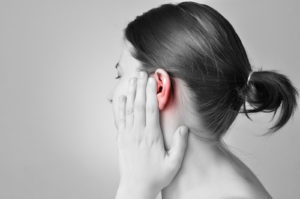 Complications of acute otitis media develop infrequently. In rare cases, bacterial inflammation of the middle ear passes to nearby structures with the formation of mastoiditis, petrositis, and labyrinthitis. Intracranial complications are extremely rare, among them there are meningitis, an abscess of the brain substance, an epidural abscess, thrombosis of the lateral sinus. Even with adequate antibacterial treatment, the recovery period for these complications is very long, especially in the presence of an immunodeficiency state of the patient.
Complications of acute otitis media develop infrequently. In rare cases, bacterial inflammation of the middle ear passes to nearby structures with the formation of mastoiditis, petrositis, and labyrinthitis. Intracranial complications are extremely rare, among them there are meningitis, an abscess of the brain substance, an epidural abscess, thrombosis of the lateral sinus. Even with adequate antibacterial treatment, the recovery period for these complications is very long, especially in the presence of an immunodeficiency state of the patient.
Examination and diagnosis
In order to identify acute inflammation of the middle ear, establish a diagnosis of acute otitis media, the otolaryngologist examines the eardrum, nasopharynx, nasal cavity and paranasal sinuses. In some cases, it is necessary to check the patient’s balance and coordination of movements in order to promptly identify the possible consequences of the disease.
Diagnostics also includes hearing tests. Often a survey of auricle secretions is performed. In case of suspected complications or other side effects, an X-ray examination is performed. With the help of an x-ray, it is possible to determine the necessity of surgical intervention in a timely manner.
Otitis media treatment
The treatment for middle ear inflammation is mainly symptomatic. This means that it is aimed at eliminating the symptoms, not the cause of the disease. This is due to the fact that otitis media is caused by various viruses and bacteria that are resistant to many antibiotics, so not every antibiotic provides an effective treatment outcome.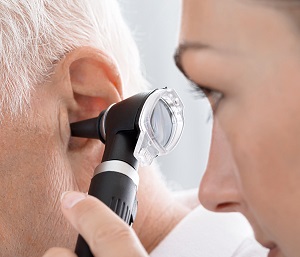
At the initial stage of the disease, it is recommended to use decongestant nasal sprays. Additionally, the appointment of anti-inflammatory, antipyretic and painkillers of natural origin to relieve ear pain is prescribed.
After consultation with a doctor, children are recommended to take paracetamol as a painkiller and antipyretic. Treatment of otitis media also includes pain drops in the ear canal, but only as directed by a doctor.
Antibiotic treatment is prescribed by a doctor to prevent severe complications after otitis media and reduce the risk of middle ear inflammation. In this case, it is important to strictly comply with all requirements regarding the frequency and duration of antibiotic administration.
If otitis media often occurs in children at an early age, then it is recommended that they remove enlarged from birth or chronically inflamed tonsils, adenoids, children’s “polyps”. In children, teenagers with frequent or chronic inflammation of the nasal mucosa and sinuses, accompanied by otitis media, surgery is an essential treatment. Here we are talking about the so-called rehabilitation of the nasopharynx, nose and paranasal sinuses. None of the above forms of chronic inflammation of the middle ear can be treated with surgical approach only. Surgery is necessary only when conservative treatment does not give the desired result.
A course of treatment and prognosis
As a rule, otitis media proceeds without consequences and is completely curable with timely diagnosis and proper treatment. About 80% of patients get rid of symptoms within 2-7 days from the onset of the disease.
However, chronic inflammation of the middle ear sometimes causes complications, the most common of which is mastoiditis. The mastoid is part of skull bone, located near the middle ear and is also filled with air. With mastoiditis, bone tissue is often affected and inflammation can go to the lining of the brain or brain.
Often otitis media in childhood leads to hearing loss and a delay in the development of speech in the child. One of the complications of the disease can be inflammation of the inner ear (labyrinthitis).
Antibiotics, ear drops or all at once?
Sometimes doctors can recommend something to put dropt into ears. At best, it will be drops with antibiotics. If otitis media is caused by bacteria (as most accurately indicated only by the results of laboratory tests), treatment with antibiotics would be quite logical. What do you think is best to use – drops for ears with antibiotics or antibiotics in tablets? If you chose the first option, you are wrong.
The middle ear is enclosed by a tympanic membrane. If there are no openings in it (as a healthy person should have), this approach will not work, and the medicine simply won’t get inside. But when there are holes, it becomes simply dangerous to treat yourself. These drops could at least reach the site of infection.
It turns out that antibiotics are not always necessary. Most likely, they will be prescribed for a more severe form of the disease, when pus is already accumulating in the middle ear or if the pains that started to bother you have not passed and have not decreased in two days. If you decide to use antibiotics, for ear infections, you should prefer tablet forms. By the way, doctors often use Amoxicillin as an antibiotic against middle ear infections.
Watch the video explaining what is acute otitis media (especially in children) in details:

